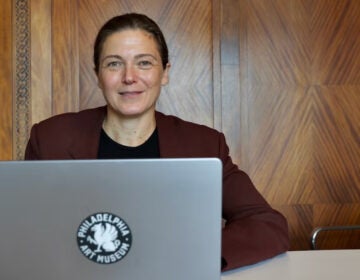Phila. museum lauds man who made us love Monet, Manet, Degas
Much of the Impressionist art collected by wealthy Philadelphians passed through the hands of a single art dealer in France — a man who almost single-handedly introduced the world to Monet, Renoir and Degas.
Paul Durand-Ruel was a late-19th-century art dealer in Paris who championed Impressionism, an underdog movement whose time had not yet arrived.
He was known to visit an artist in studio and buy everything he could see. Durand-Ruel scooped up 26 paintings by Edouard Manet in one go, a gesture that boosted the career of the artist who had been little appreciated otherwise.
Durand-Ruel bought everything he could get his hands on by the Barbizon-school painter Theodore Rousseau: 90 paintings and sketches, which took him two decades to sell.
The dealer’s belief in Impressionism nearly undid him. He scrambled out of bankruptcy twice.
The French press openly hated the Impressionists. Critics often tried to out-clever each other with disparaging descriptions: One wrote that the sun-dappled skin of a nude by Auguste Renoir looked like a corpse in pulchritude.
“It’s difficult to imagine how violent the public’s reaction was to these paintings,” said Durand-Ruel’s great-grandson, Paul-Louis Durand-Ruel, a retired banker who now manages the family archives. “People really fought in the exhibitions. The painters were considered insane, the dealer even more insane than the painters.”
The new exhibition at the Philadelphia Museum of Art, “Discovering the Impressionists: Paul Durand-Ruel and the New Painting” describes how Durand-Ruel sold the Impressionists to a public that didn’t want them.
He launched innovative sales techniques, such as marketing the artists as individual personalities. In an unprecedented move at the time, he staged solo exhibitions for artist like Claude Monet, including one featuring nothing but 15 meditations on poplar trees.
“He was building their individual reputations, enabling the members of the public to distinguish Manet from Monet,” said curator Jennifer Thompson. “The papers would continually confuse the O and the A in their names.”
Durand-Ruel also aggressively branched into untapped international markets. After opening a gallery in New York City, he would push west to Cleveland, Chicago, even Denver, renting out hotel rooms in each city to hang a temporary gallery show.
The American collectors, flush with new money and knowing little of the evisceration the Impressionists had received from the French press, eagerly snapped up the paintings. Durand-Ruel’s New York gallery surpassed his original Paris gallery in sales.
He even opened his personal apartment as a showroom so people could see how Impressionist art looks hanging over the couch.
“Many of these artists are working outdoors, so they are working on smaller canvases — landscapes, country views, things you could live with them comfortably,” said Thompson. “These are not dramatic incidents or religious subject — these are something you could look at over breakfast. They were scaled to fit inside an ordinary home.”
Through the family connections of Mary Cassatt, a prominent artist who trained at the Pennsylvania Academy of the Fine Arts, many Philadelphia industrialists became early and avid collectors of Impressionism and were great customers of Durand-Ruel.
Many would eventually donate to the Philadelphia Art Museum. Thompson says the museum has 100 pieces in its collection originally bought by Durand-Ruel.
WHYY is your source for fact-based, in-depth journalism and information. As a nonprofit organization, we rely on financial support from readers like you. Please give today.










